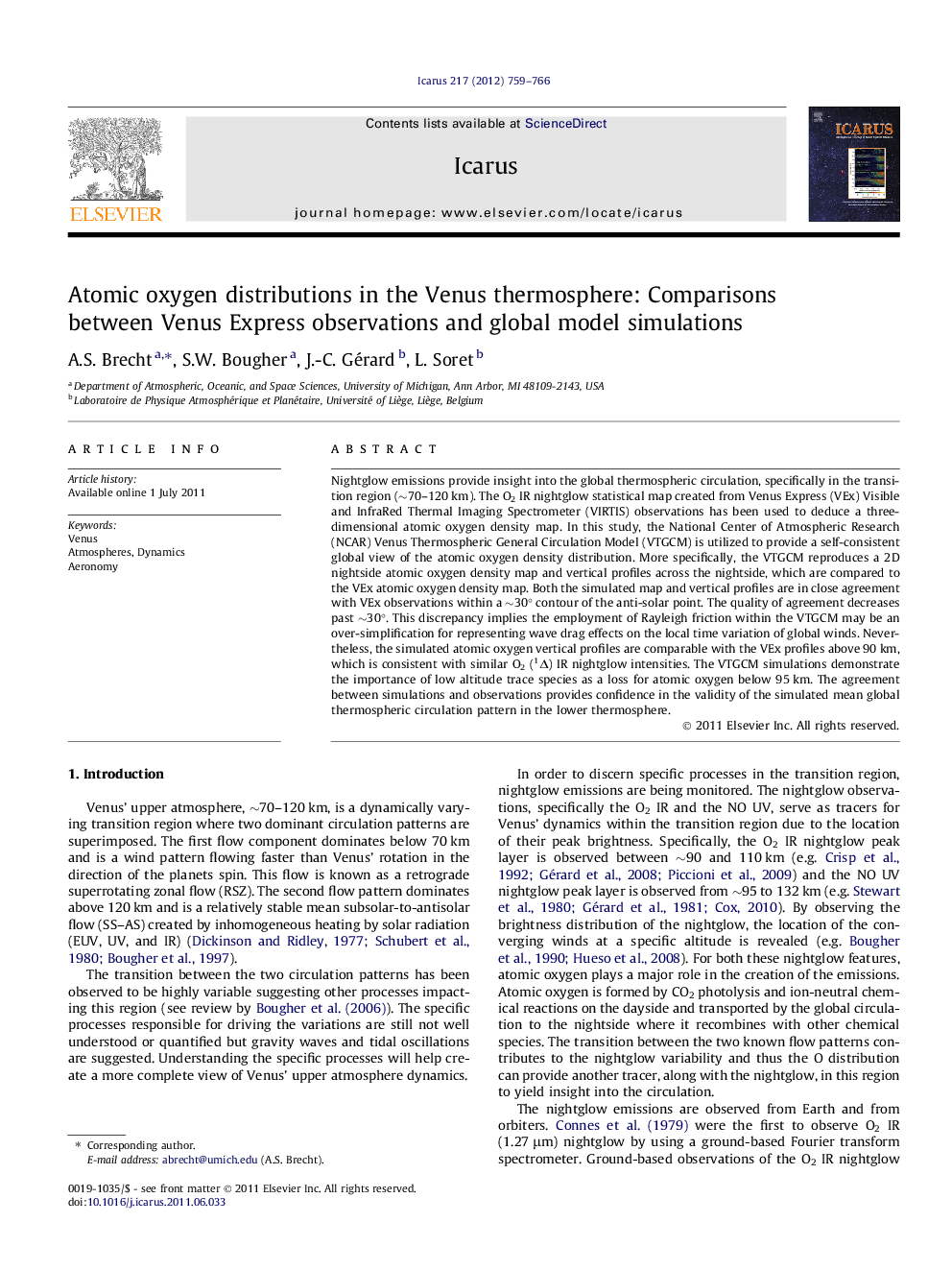| Article ID | Journal | Published Year | Pages | File Type |
|---|---|---|---|---|
| 1773698 | Icarus | 2012 | 8 Pages |
Nightglow emissions provide insight into the global thermospheric circulation, specifically in the transition region (∼70–120 km). The O2 IR nightglow statistical map created from Venus Express (VEx) Visible and InfraRed Thermal Imaging Spectrometer (VIRTIS) observations has been used to deduce a three-dimensional atomic oxygen density map. In this study, the National Center of Atmospheric Research (NCAR) Venus Thermospheric General Circulation Model (VTGCM) is utilized to provide a self-consistent global view of the atomic oxygen density distribution. More specifically, the VTGCM reproduces a 2D nightside atomic oxygen density map and vertical profiles across the nightside, which are compared to the VEx atomic oxygen density map. Both the simulated map and vertical profiles are in close agreement with VEx observations within a ∼30° contour of the anti-solar point. The quality of agreement decreases past ∼30°. This discrepancy implies the employment of Rayleigh friction within the VTGCM may be an over-simplification for representing wave drag effects on the local time variation of global winds. Nevertheless, the simulated atomic oxygen vertical profiles are comparable with the VEx profiles above 90 km, which is consistent with similar O2 (1Δ) IR nightglow intensities. The VTGCM simulations demonstrate the importance of low altitude trace species as a loss for atomic oxygen below 95 km. The agreement between simulations and observations provides confidence in the validity of the simulated mean global thermospheric circulation pattern in the lower thermosphere.
► VTGCM and VEx deduced O data agree within 30° contour of the anti-solar point. ► Discrepancy beyond 30° implies VTGCM over-simplifies wave drag effects. ► Simulations demonstrate the importance of trace species as a loss for O below 95 km. ► Comparisons constrain simulated mean global thermospheric circulation.
